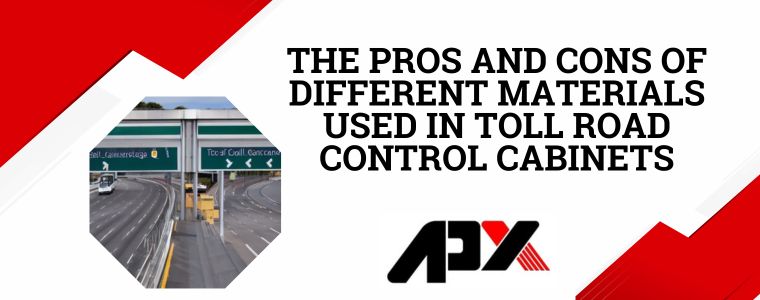Toll road control cabinets play a crucial role in managing and controlling traffic on highways and expressways. These cabinets house essential electronic components and control systems, ensuring the smooth functioning of toll booths and traffic management systems. When it comes to toll road control cabinets, the choice of materials is a critical decision that can greatly impact their performance, durability, and cost-effectiveness. This article will explore the pros and cons of different materials commonly used in toll road control cabinets, including steel, aluminum, fiberglass, and plastic. By understanding the advantages and disadvantages of each material, transportation authorities and infrastructure managers can make informed decisions regarding the selection and installation of toll road control cabinets.
1. Introduction to Toll Road Control Cabinets
Toll road control cabinets may not be the most glamorous topic, but they play a crucial role in ensuring the smooth operation of toll roads. These cabinets house the electronic control systems that manage everything from toll collection to traffic monitoring. Choosing the right materials for these cabinets is essential to ensure their longevity and functionality.
1.1 Purpose and Function of Toll Road Control Cabinets
Toll road control cabinets serve as the command center for toll roads. They house the sophisticated electronic equipment that controls and monitors various aspects of the road, such as toll booths, electronic signage, and surveillance systems. These cabinets provide protection for the delicate equipment while allowing easy access for maintenance and repairs.
1.2 Importance of Material Selection
Material selection for toll road control cabinets is critical due to the harsh operating conditions they face. These cabinets are constantly exposed to extreme weather, temperature variations, and high humidity levels. They also need to withstand potential vandalism, accidents, and constant use. Choosing the right materials ensures the cabinets can withstand these challenges and maintain their functionality over the long term.
2. Advantages and Disadvantages of Steel Cabinets
2.1 Strength and Durability of Steel Cabinets
Steel cabinets are known for their exceptional strength and durability. They offer robust protection against impact, vandalism, and harsh weather conditions. Steel cabinets are also fire-resistant, providing an added safety benefit. However, their weight can make installation and transportation more challenging.
2.2 Corrosion Resistance and Maintenance
One downside of steel cabinets is their susceptibility to corrosion. While they can be treated with coatings to enhance their resistance, regular maintenance is required to prevent rust and ensure their longevity. Additionally, corrosion can weaken the structural integrity of steel cabinets over time.
2.3 Weight and Installation Considerations
Steel cabinets are considerably heavier than other materials, making them more cumbersome to transport and install. This can increase installation costs and require additional equipment. However, their weight also adds to their sturdiness and makes them less prone to damage from strong winds or accidental impacts.
3. Pros and Cons of Aluminum Cabinets
3.1 Lightweight Properties of Aluminum Cabinets
Aluminum cabinets offer a significant advantage in terms of weight. They are much lighter than steel cabinets, making transportation and installation easier and more cost-effective. The lightweight nature of aluminum also reduces the load on the supporting structures, increasing their lifespan.
3.2 Resistance to Corrosion and Weathering
Aluminum cabinets possess excellent corrosion resistance, especially when compared to steel. They naturally form a protective oxide layer that prevents further rusting. This characteristic, combined with their ability to withstand various weather conditions, makes aluminum cabinets an attractive option for outdoor toll road installations.
3.3 Structural Integrity and Design Flexibility
While aluminum may not be as strong as steel, it still offers good structural integrity. When properly designed and reinforced, aluminum cabinets can provide sufficient protection for the electronic equipment. Additionally, aluminum is highly malleable, allowing for more design flexibility, which can be advantageous for specific project requirements.
4. Comparison of Fiberglass Cabinets
4.1 Benefits of Fiberglass Cabinets
Fiberglass cabinets bring a unique set of advantages to the table. They are lightweight, durable, and resistant to corrosion, making them a popular choice for toll road control cabinets. Fiberglass cabinets also have excellent electrical insulation properties, providing enhanced protection for sensitive electronic equipment.
4.2 Impact Resistance and UV Stability
Fiberglass cabinets offer exceptional impact resistance, making them highly suitable for high-traffic areas prone to accidental impacts. They are also resistant to UV radiation, ensuring their color and structural integrity are maintained even under intense sunlight exposure.
4.3 Thermal Expansion and Insulation Properties
Thermal expansion can pose challenges for some materials, but fiberglass cabinets excel in this aspect. They have low thermal expansion rates, which reduces the risk of warping or cracks due to temperature fluctuations. Additionally, fiberglass provides excellent thermal insulation, protecting the equipment inside from heat and cold.
In conclusion, choosing the right material for toll road control cabinets requires careful consideration of strength, durability, corrosion resistance, weight, installation requirements, and design flexibility. Steel cabinets offer great strength but require more maintenance, while aluminum cabinets are lightweight and corrosion-resistant. Fiberglass cabinets combine strength, durability, and insulation properties, making them a versatile choice for toll road applications. Ultimately, the material selection should align with the specific needs of the toll road and ensure optimal performance and longevity of the control cabinets.5. Exploring the Benefits and Drawbacks of Plastic Cabinets
5.1 Versatility and Customization of Plastic Cabinets
When it comes to toll road control cabinets, plastic is a material that offers remarkable versatility. Plastic cabinets can be molded into various shapes and sizes, allowing for customization to fit specific requirements. Need a cabinet with multiple compartments or unique dimensions? Plastic can deliver. Plus, plastic cabinets are available in a range of colors, making them an aesthetically appealing choice.
5.2 Resistance to Chemicals and Environmental Factors
One significant advantage of plastic cabinets is their resistance to chemicals and environmental factors. Plastic is known for its ability to withstand exposure to harsh substances, such as strong cleaning agents or corrosive materials. Additionally, plastic cabinets are resistant to moisture and temperature fluctuations, enabling them to endure the unpredictable elements of outdoor environments.
5.3 Longevity and Maintenance Considerations
Plastic cabinets boast impressive longevity due to their durability. They are resistant to rust and decay, which is especially crucial in areas with high humidity or frequent rainfall. Maintenance-wise, plastic cabinets are low-maintenance, requiring only occasional cleaning to keep them looking pristine. However, it’s worth noting that extreme temperatures, such as intense heat or cold, can cause plastic to become brittle over time.
6. Environmental Considerations in Material Selection
6.1 Sustainability and Recyclability
In today’s environmentally conscious world, the sustainability and recyclability of materials are paramount. Plastic cabinets, unfortunately, have their downsides in this department. While efforts have been made to improve the recyclability of plastics, many plastic variants still pose challenges when it comes to proper disposal and recycling. When evaluating the environmental impact, plastic may not be the most eco-friendly choice.
6.2 Energy Consumption in Manufacturing
The energy consumption required to manufacture plastic cabinets varies depending on the type of plastic used. Some plastics, like polyethylene, have a relatively lower energy footprint compared to others. However, it’s important to consider that plastic production often involves the extraction and processing of non-renewable resources, contributing to overall energy consumption.
6.3 Impact on Carbon Footprint
Plastic production is associated with greenhouse gas emissions, adding to our carbon footprint. Furthermore, the disposal of plastic products, including cabinets, can contribute to environmental pollution if not managed properly. Considering the long-term consequences, it’s crucial to evaluate the lifecycle impact of plastic cabinets on the environment.
7. Cost Analysis of Different Cabinet Materials
7.1 Initial Investment and Long-Term Cost Comparison
When it comes to the cost of toll road control cabinets, plastic tends to be a cost-effective option. Plastic cabinets are generally more affordable upfront compared to other materials like stainless steel or aluminum. However, it’s essential to consider the specific requirements and durability needed for a toll road environment. While plastic cabinets may have a lower initial investment, they may require more frequent replacements or maintenance in the long run.
7.2 Maintenance and Replacement Expenses
As mentioned earlier, plastic cabinets are low-maintenance, requiring minimal upkeep. This can translate to cost savings over time, as less money is spent on maintenance tasks such as repainting or rust removal. However, it’s important to factor in the potential need for replacement cabinets due to exposure to extreme weather conditions or wear and tear.
7.3 Return on Investment Considerations
Determining the return on investment for toll road control cabinets involves evaluating factors such as durability, maintenance costs, and the potential need for replacements. While plastic cabinets may have a lower upfront cost, it’s crucial to weigh this against the potential long-term expenses of maintenance and replacement to make an informed decision.
8. Conclusion and Recommendations for Toll Road Control Cabinets
When it comes to toll road control cabinets, plastic offers versatility, resistance to chemicals and environmental factors, and low maintenance requirements. However, it’s important to carefully consider the environmental impact and recyclability of plastic, as well as the potential long-term costs associated with maintenance and replacements. Ultimately, the choice of material for toll road control cabinets should be based on the specific requirements, durability needs, and consideration of the environmental impact.




